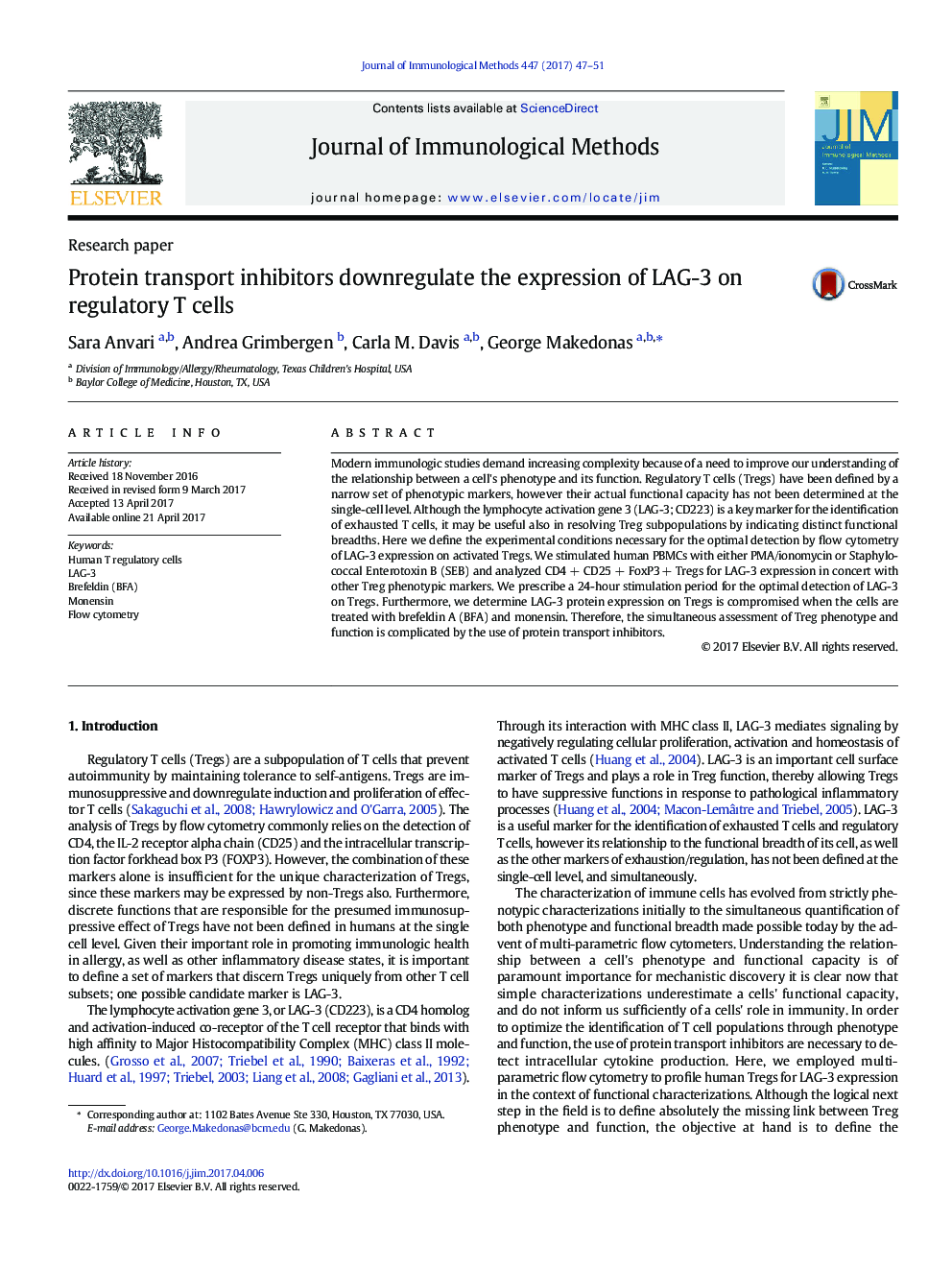| Article ID | Journal | Published Year | Pages | File Type |
|---|---|---|---|---|
| 5522129 | Journal of Immunological Methods | 2017 | 5 Pages |
â¢LAG-3 expression on T regulatory cells is evaluated.â¢LAG-3 expression is down-regulated in the presence of protein transport inhibitors.â¢Alternative methods must be employed when analyzing cytokines and LAG-3.
Modern immunologic studies demand increasing complexity because of a need to improve our understanding of the relationship between a cell's phenotype and its function. Regulatory T cells (Tregs) have been defined by a narrow set of phenotypic markers, however their actual functional capacity has not been determined at the single-cell level. Although the lymphocyte activation gene 3 (LAG-3; CD223) is a key marker for the identification of exhausted T cells, it may be useful also in resolving Treg subpopulations by indicating distinct functional breadths. Here we define the experimental conditions necessary for the optimal detection by flow cytometry of LAG-3 expression on activated Tregs. We stimulated human PBMCs with either PMA/ionomycin or Staphylococcal Enterotoxin B (SEB) and analyzed CD4Â +Â CD25Â +Â FoxP3Â + Tregs for LAG-3 expression in concert with other Treg phenotypic markers. We prescribe a 24-hour stimulation period for the optimal detection of LAG-3 on Tregs. Furthermore, we determine LAG-3 protein expression on Tregs is compromised when the cells are treated with brefeldin A (BFA) and monensin. Therefore, the simultaneous assessment of Treg phenotype and function is complicated by the use of protein transport inhibitors.
